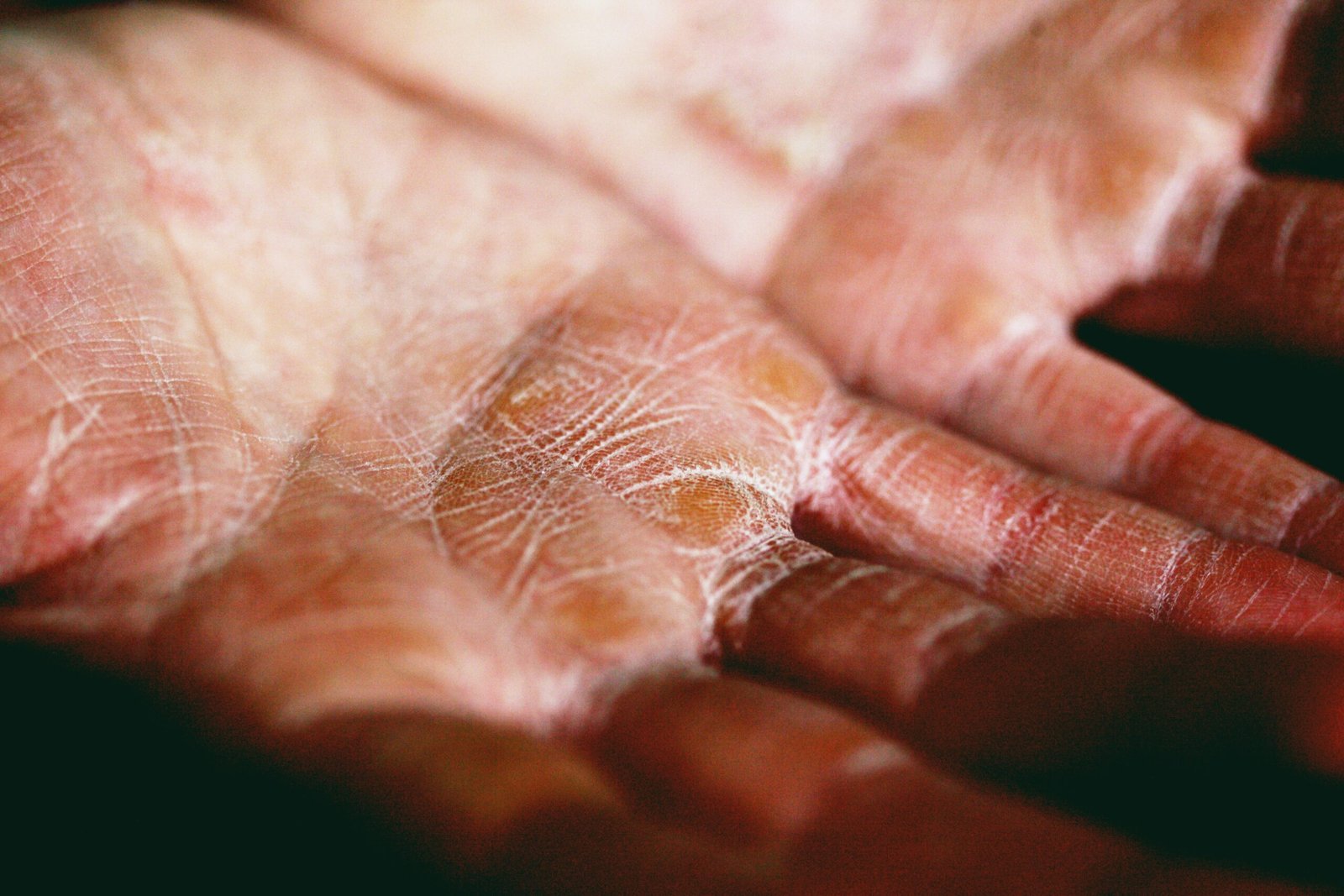Dry skin can be a challenge to manage, but with the right skin care routine, you can keep it hydrated and healthy. Here are some essential steps to include in your daily regimen:
1. Gentle Cleansing: Start by cleansing your face with a mild, hydrating cleanser. Avoid using harsh soaps or cleansers that strip away natural oils. Look for products that are specifically formulated for dry skin.
2. Exfoliation: Exfoliating your skin once or twice a week can help remove dead skin cells and promote cell turnover. Opt for a gentle exfoliator that won’t irritate or dry out your skin. Remember to moisturize immediately after exfoliating.
3. Hydration is Key: Moisturizing is crucial for dry skin. Choose a rich, nourishing moisturizer that contains ingredients like hyaluronic acid, glycerin, or ceramides. Apply it to damp skin to lock in moisture.
4. Sun Protection: Protect your skin from the harmful effects of the sun by wearing a broad-spectrum sunscreen with an SPF of 30 or higher. Sun exposure can further dehydrate dry skin, so it’s important to shield it from UV rays.
5. Hydrating Masks: Treat your skin to a hydrating mask once or twice a week. Look for masks that contain ingredients like aloe vera, honey, or hyaluronic acid. These masks can provide an extra boost of hydration.
6. Avoid Hot Water: Hot water can strip away the natural oils from your skin, making it even drier. Stick to lukewarm water when washing your face and limit your shower time to prevent further dehydration.
7. Drink Plenty of Water: Hydrating your skin from the inside out is just as important as applying moisturizers topically. Drink an adequate amount of water throughout the day to keep your skin hydrated.
Remember, consistency is key when it comes to a skin care routine. Stick to these steps and adjust them as needed to find the right balance for your dry skin.
Skincare Routine for Dry Skin By
:max_bytes(150000):strip_icc():format(webp)/Stocksy_txp2c5a3025r0f300_Medium_4747453-5cb5983c35d2450aa2101fdcc1912564.jpg)
“Dry skin means that your face can’t protect itself as well as it should from the environment. When the skin is dry, it develops tiny cracks in the outer layer, interfering with its ability to maintain hydration properly,” says dermatologist Joshua Zeichner.
“Especially if you have dry skin, your morning prep is important to get your skin ready for the day,” he adds.. And when it comes to the perfect skincare routine for dry skin, you’ll notice a consistent thread throughout the derms’ recommendations: products that keep moisture in and harmful UV-rays out. So ahead, discover the ultimate step-by-step skincare routine for dry skin.
MEET THE EXPERT
- Corey L. Hartman, MD is a board-certified dermatologist and the founder of Skin Wellness Dermatology in Birmingham, AL.
- Joshua Zeichner, MD, is an associate professor of dermatology and the director of cosmetic and clinical research in dermatology at Mount Sinai Hospital in New York City.
- Lian Mack, MD, is a board-certified dermatologist and the founder of GlamDerm.
Dry Skin Ingredients to Look For
“The best moisturizing cream for dry skin will have a combination of emollients, humectants, and occlusives,” says Hartman. Emollients are ingredients that are applied to the skin that add moisture to the skin barrier. Some common emollients are petrolatum, shea butter and cocoa butter. Occlusives add moisture to the skin and add a physical barrier between the skin to prevent transepidermal water loss, locking in the hydration added to the skin. Common occlusives include beeswax, argan oil, jojoba oil and mineral oil.
Humectants work by attracting water from the air or deeper into the skin to add moisture to the skin barrier. Hyaluronic acid and glycerin are two of the most popular humectants.”
I Tried Biafine’s Emulsion Cream and It Soothed My Ultra-Dry Skin
Morning Skincare Routine
Step One: Non-Foaming Cleanser
If there’s one thing that hasn’t changed about our skincare routines since childhood, it’s starting the day with a fresh face—literally. When it comes to washing your face, the type of cleanser you choose is key. “Preparing your skin to face the day when it has a tendency to be dry should involve using a gentle, non-foaming cleanser,” advises Mack. Look for one specifically made with hydrating ingredients. “These products remove dirt and oil without disrupting the outer skin layer the way that some foaming cleansers do,” says Zeichner. Most of our favorites also happen to be from the drugstore.
Step Two: Vitamin C Serum
After cleansing, Mack suggests upping your moisture game even further. “I recommend adding a vitamin C serum and layering hyaluronic acid on top for an extra surge of moisture,” she says. “Hyaluronic acid is a well-known humectant for the skin, pulling water to it and ultimately reducing the appearance of fine lines and wrinkles.”
The 11 Best Vitamin C Serums We Tested and Recommend For Glowing Skin
Step Three: Moisturizer
While for some a moisturizing SPF is enough hydration for the day, “if someone is really dry, consider applying a moisturizer prior to an SPF of 30 or higher,” says Mack. When it comes to moisturizer shopping, “look for light moisturizers that contain ingredients that can soften rough cells, pull in hydration, and form a protective seal over the surface of the skin,” Zeichner says. “Skin oil and skin hydration are two separate issues, and you can actually be way oily in the summer but also lacking hydration,” he explains. Zeichner is a fan of Neutrogena’s Hydro Boost Water Gel ($22). “This is jam-packed with hyaluronic acid, which is like a sponge that pulls in water… to hydrate and firm the skin,” he says.
Skin care Tips
Mack recommends applying your skincare products immediately after the shower or bath (“to help lock in moisture”), sleeping with a humidifier, and drinking at least 64 fl. oz. of water per day.
Step Four: SPF
Every skin type should be using SPF, and dry skin is no exception. “UV light and pollution cause free radical damage that leads to premature aging,” says Zeichner. Those with dry skin should look for sunscreens that, of course, help the skin lock in moisture. “Rather than a straight sunscreen that you would use for the beach if you have dry skin, look for a moisturizer/sunscreen combo,” says Zeichner.
To make sure you’re getting proper coverage, look for an SPF that is 30 or higher (makeup with SPF isn’t going to cut it), and make sure to re-apply every two hours.
Nighttime Skincare Routine
Step One: Cleansing Balm to Remove Makeup and SPF
The first step in your evening routine should be a cleansing balm or micellar water to remove makeup and SPF from the daytime.
Step Two: Hydrating Cleanser
After cleansing, apply hydrating serums and topicals that can help you further lock in moisture—and avoid those that might undermine your efforts. “If someone is extremely dry, avoid the use of vitamin A derivatives like retinoids and retinol, and reach for your hyaluronic acid serum,” she says. “Couple that with a hydrating moisturizer.”
Byrdie Tip
Don’t over-exfoliate. “If you see flaky skin, exfoliating may be your gut reaction, but instead, get your skin what it needs—hydration,” says Zeichner. If you must exfoliate, use a light exfoliant, like Tatcha’s Rice Enzyme Powder ($68).
Step Three: Targeted Treatment Like Retinol or Spot Treatments
If you use an “active” ingredient such as retinol or a benzoyl peroxide spot treatment for breakouts, apply this as your first step after cleansing. And ideally, to avoid irritation, wait at least 20 minutes after cleansing and drying off before you apply your treatment. This will ensure that the skin is completely dry when you apply your active ingredients, which reduces dryness and irritation.
Step Four: Hydrating Serum Like Hyaluronic Acid
While you don’t need to complete this step, it’s recommended by dermatologists if your skin is chronically dry and dehydrated. After applying your retinol or other targeted active, apply a hydrating serum such as hyaluronic acid to hydrate the skin. And pro tip: While it’s ideal to apply your retinol to dry skin, hyaluronic acid is more effective when applied to damp skin. So we recommend misting your face after you have applied your retinol and before you apply your HA serum. If that feels too complicated, you can skip this step entirely or just apply your HA serum to dry skin—you’ll still reap some hydrating benefits.
Step Five: Moisturizer
If you have dry skin, you should never skip moisturizer in your AM or PM routine, but it’s particularly important to use it at night because that’s when your skin enters its rest and recovery phase. “For anyone with dry skin, I recommend using a heavier moisturizer cream versus a lotion,” says Hartman. “A thicker cream tends to have more occlusives, which are the most essential type of ingredient to look for if you have dry skin. A thicker cream will also last longer in the skin, whereas a lotion may dry out sooner.”
Step Six (Optional): Face Oil
Optionally, you can choose to add a face oil as the last step in your evening routine. (Skip this step if your skin type is dry and acne-prone.) “Locking in your moisturizer with a face oil isn’t always necessary, but can be a nice added step at the end of your skincare routine to ensure that your moisturizer stays in the skin where it is needed most,” says Hartman. “I only recommend locking in a facial oil if you’ve previously used a moisturizer—your skin needs the combination of a product that will add hydration to the skin. A facial oil is just going to help retain the water content within your skin.”
Dry Skin Routine Tips
- Avoid Hot Water: While a steamy shower or hot bath may soothe the muscles, they can wreak havoc on dry skin. Contrary to the moisturizing benefits you might think you’re getting, hot water can actually strip the skin of its natural oils, further exacerbating dry or sensitized skin. Instead, wash with warm water and apply hydrating products while the skin is still damp. Save occlusive ingredients for last, as these won’t allow anything else to penetrate the skin barrier.
- Use Moisturizer While Your Skin Is Still Damp: Applying a moisturizer while your skin is still slightly damp will help lock in the water content, subsequently hydrating the skin more effectively.
- Add a Sheet Mask Once a Week: Using a hydrating sheet mask like the 111 Skin Cryo De-Puffing Mask ($32) once a week can do wonders for hydrating the skin.
- Be Careful With Retinol: Hartman recommends that those with dry skin start slow when it comes to retinol. “Use a retinol product 1-2 times a week for the first few weeks in order to give your skin time to adjust,” he says. “Make sure you use a moisturizing product in both your morning routine (when you are not using retinol) and at night, in conjunction with your retinol. The ‘retinol sandwich‘ method may be good for boosting the skin’s moisture level and limit some of the irritation that you might experience from retinol, but it will also lessen the effects of the retinol.” If you want to reap the full benefits of retinol without irritating your skin, Hartman recommends applying to completely dry skin (wait at least 20 minutes after washing your face to apply).
- Avoid Products That Contain Alcohol: “Avoid anything with alcohol, as alcohol dries out the skin,” says Hartman. “I also don’t recommend astringents like witch hazel in moisturizers either, as they can also dry out the skin.”



